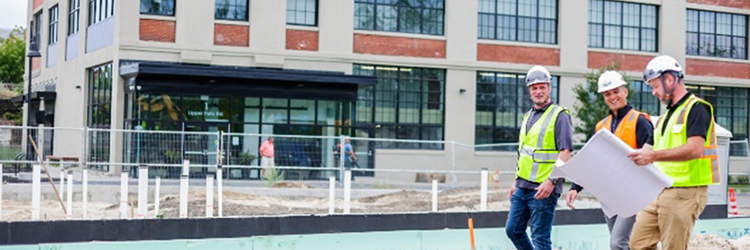New Hampshire investment real estate 2020 review and a look forward - by Robert Rohrer

Colliers
International
The commercial real estate market was not immune to the inconsistencies the pandemic unloaded on all aspects of the economy. Far from it. However, 2020 proved to be an active year on the commercial real estate investment front, albeit with a shift as to which asset class interest was favored.
Although long sought-after classes like self-storage, multifamily, medical office, and retail continued to be active, the spotlight was really on industrial – particularly assets focused on getting online purchases and deliveries in the hands of consumers.
Nationally, the industrial investment market actually saw an increase in asset value. According to Real Capital Analytics, average pricing increased to $101.40 per s/f, only the second time average square foot pricing has exceeded $100. Warehouse/ distribution facilities accounted for nearly 75% of all industrial investment activity, primarily for the reason stated above. The protracted pandemic will likely continue to impact the industrial sector, manufacturing employment, and disruptions to supply chains. It appears likely that data centers, cold storage facilities, and warehouse/distribution centers will continue to outperform in the industrial sector as a whole in 2021.
In New Hampshire, the industrial asset class was a highlight as well. Colliers tracking showed that average sale prices of industrial property increased to the $80-$90 per s/f range for well-positioned and maintained properties. The strong manufacturing base in New Hampshire contributed to the fact that R&D/flex facilities played a bigger role in-state than on a national level. R&D/flex and warehouse/distribution sales volumes were nearly equal, per our internal research and that of CoStar Group’s. Current activity level suggests that industrial investments will remain in demand in 2021, with single-tenant (including sale-leaseback transactions) and larger multi-tenant assets drawing the most interest.
Turning to other asset classes, selfstorage, multifamily, medical office buildings, and well-located retail sectors were also active in 2020. Retail, in particular, remained one of the most active asset classes in New Hampshire. This seems surprising, given the current stressors on this asset class, but New Hampshire’s large amount of retail properties likely contributed to the amount of activity in 2020.
We believe that the majority of the capital market activity in 2021 will continue the trends seen in the second half of 2020. Industrial property will see increased interest, while well-positioned assets in the other commercial real estate classes will also garner significant interest
Bob Rohrer is a managing director of Colliers International, Manchester, NH.
Reveler Development celebrates final phase of work at The Levee - new 51-unit apartment building in Biddeford


Interest rates and inflation - by Matthew Bacon
As we all know, interest rates have been changing drastically, with movement in both directions, depending on the type and term of financing. The Federal Open Market Committee has taken drastic action in efforts to curb abnormally high inflation, but it hasn’t controlled labor cost growth to the extent that was intended.

Maine multifamily outlook: Opportunities in Portland, Bangor, and Lewiston-Auburn - Blake Wright and Kristie Russell
The multifamily market in Maine’s major cities presents a diverse range of opportunities for investors. We looked at the potential benefits and unique characteristics of three major submarkets in the state: Portland, Bangor, and Lewiston-Auburn. The information below is based on research done in CoStar and county registries, and focuses on multifamily properties that have four or more units.

The Greater Portland industrial mid-year market update - by Nate Roop


 (1) (1).png)





.png)


.png)